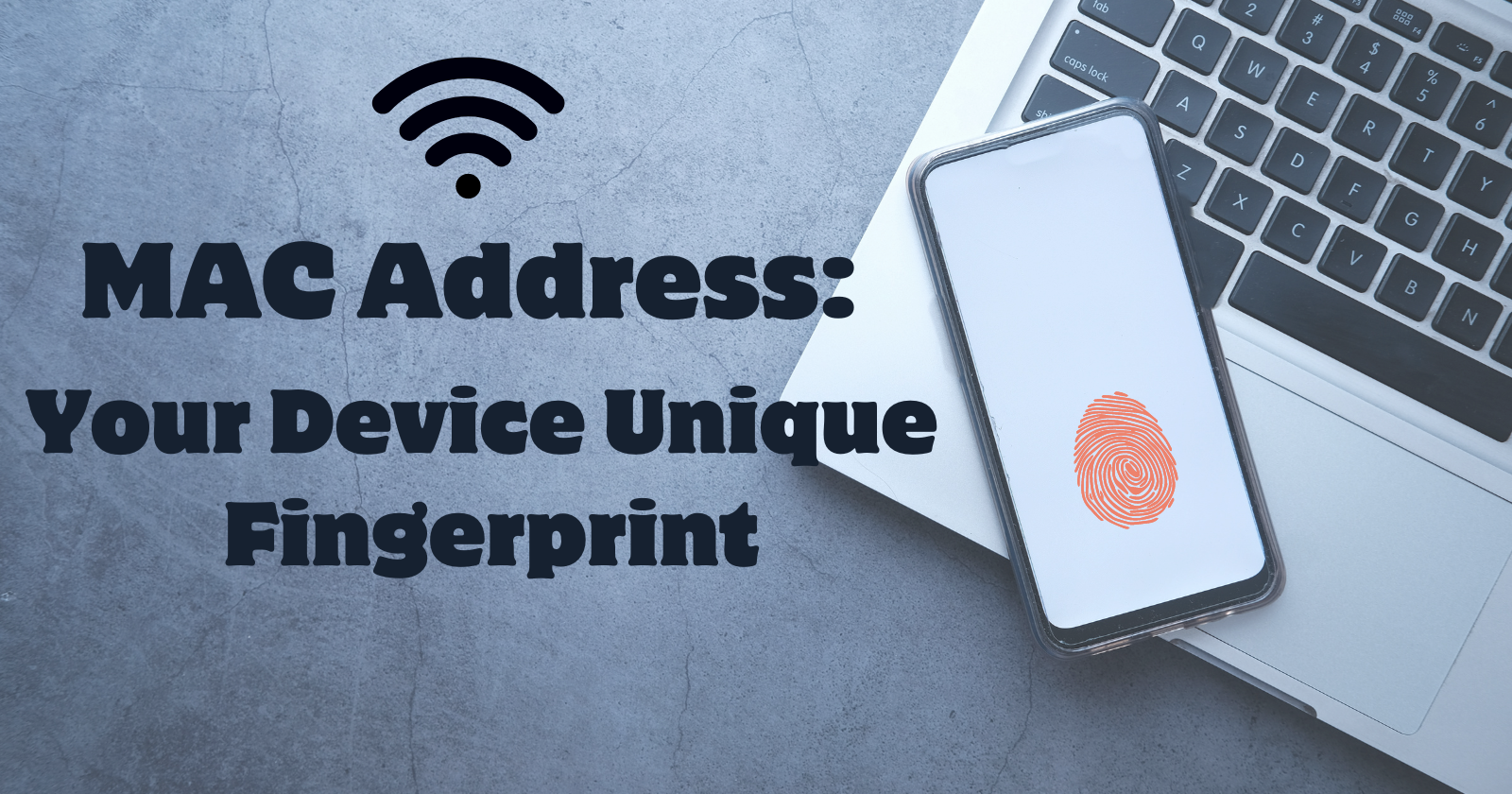MAC Address: Your Device's Unique Fingerprint
 Jasai Hansda
Jasai Hansda
In the digital world, every device connected to a network needs a unique identifier, much like how every building in a city needs a unique address for mail delivery. This unique identifier is known as a MAC address, which stands for Media Access Control.
What is a MAC Address?
Imagine the internet as a bustling city. Every building in this city needs a unique address for the postal service to deliver letters. Similarly, in the digital world, every device connected to a network needs a unique identifier. This is where the MAC address comes in.
MAC stands for Media Access Control. It's a 12-character alphanumeric code assigned to network interfaces like Ethernet cards, Wi-Fi cards, or Bluetooth adapters. Think of it as your device's unique fingerprint – no two devices have the same one.
The Role of MAC Address in Networking
Let's stick with our city analogy. When you send a letter, the postal service first sorts it by city, then by street, and finally by house number. In networking, the MAC address is like the house number. It helps devices communicate directly with each other on the same network (like a local street).
Here's how it works:
Device Identification: When a device wants to send data, it includes the recipient's MAC address in the message.
Data Transfer: The message travels through the network, and routers use the MAC address to forward it to the correct device.
Error Checking: MAC addresses also help in detecting errors during data transmission.
Why is MAC Address Important?
Network Security: While not as secure as IP addresses, MAC addresses can be used to filter network access, preventing unauthorized devices from joining your network.
Device Tracking: Network administrators can use MAC addresses to track device usage and troubleshoot network issues.
Unique Identification: As mentioned earlier, each device has a unique MAC address, making it a useful identifier in various applications.
MAC Address vs. IP Address
To continue our analogy, if the MAC address is your house number, the IP address is your full postal address, including city, state, and country.
Key Differences
| Feature | MAC Address | IP Address |
| Type | Physical | Logical |
| Scope | Local network | Global network |
| Assignment | Manufacturer | Internet Service Provider (ISP) |
| Changeability | Cannot be changed | Can be changed |
| Purpose | Device identification on a local network | Device identification on a global network |
Both are necessary for effective network communication. The MAC address helps devices find each other on the same network, while the IP address enables communication across different networks.
Here we mainly talking about public IP address.
But wait! One more device identification address.
Like MAC addresses, private IP addresses function within a local network. So what is the difference?
Key Differences
| Feature | MAC Address | Private IP Address |
| Nature | Physical | Logical |
| Assignment | Manufacturer | Network administrator |
| Changeability | Cannot be changed | Can be changed (dynamically or statically) |
| Purpose | Hardware identification | Device addressing for network communication |
To summarize:
MAC address is a unique hardware identifier burned into the network interface card. It's primarily used for low-level communication within a network segment.
Private IP address is assigned to a device for network communication within a private network. It's more flexible than a MAC address and can be changed.
Therefore, while they share the same scope (local network), their roles and characteristics are distinct.
How a Device Connects to the Internet Using MAC and IP Addresses
Let's break down how a device, equipped with both a MAC and a private IP address, connects to the internet through a router.
The Roles of MAC and IP Addresses
MAC address: Unique identifier for a network interface card (NIC), used for communication within a local network.
Private IP address: Unique identifier for a device within a private network, used for communication within that network.
The Connection Process
Local Network Communication:
When a device wants to communicate with another device on the same local network, it uses the MAC address to directly address the other device.
The router uses the MAC addresses of devices on the local network to forward data between them.
Accessing the Internet:
To access the internet, the device sends a request to the router using its private IP address.
The router translates the private IP address to a public IP address (through NAT) and forwards the request to the internet.
The router uses the MAC address of the device to deliver the incoming response to the correct device on the local network.
Key Points
MAC addresses are essential for local network communication.
Private IP addresses are used for communication within a private network and are translated to public IP addresses by the router for internet access.
Routers act as a bridge between the local network and the internet, using both MAC and IP addresses to route traffic.
This combined approach ensures efficient and secure network communication.
Conclusion
In essence, the MAC address is the fundamental building block of network communication. It's the unique identifier that enables devices to talk to each other on a local network. Understanding MAC addresses is crucial for anyone interested in networking, from home users to IT professionals.
Happy Networking!!!
Subscribe to my newsletter
Read articles from Jasai Hansda directly inside your inbox. Subscribe to the newsletter, and don't miss out.
Written by

Jasai Hansda
Jasai Hansda
Software Engineer (2 years) | In-transition to DevOps. Passionate about building and deploying software efficiently. Eager to leverage my development background in the DevOps and cloud computing world. Open to new opportunities!